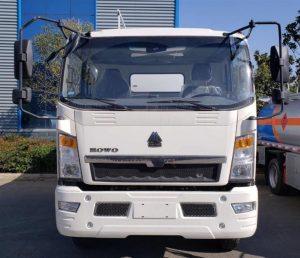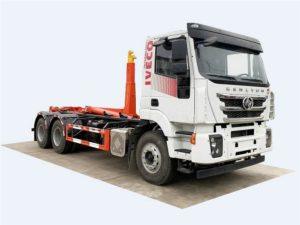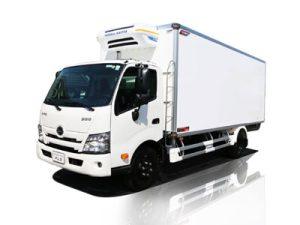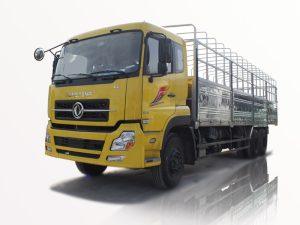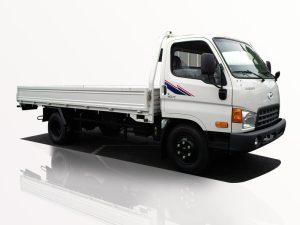Monday to Saturday - 8:00 -17:30
Understanding 2.5 Ton Vehicles: A Comprehensive Guide
Introduction
The term “2.5 ton vehicle” refers to a class of vehicles designed to carry a load capacity of approximately 2.5 tons or roughly 5,000 pounds. These vehicles serve a variety of purposes, from transporting goods to serving as emergency service vehicles. In this article, we will explore the different types of 2.5 ton vehicles, their applications, specifications, features, and what one should consider when purchasing or using them. Additionally, we will address some common questions and provide practical tips for vehicle maintenance and operation.
Types of 2.5 Ton Vehicles
There are several types of vehicles that fall into the 2.5-ton category. Each type has its own unique features and applications. The most common types include:
1. Pickup Trucks
Pickup trucks are versatile vehicles that can be used for both personal and commercial purposes. They typically feature an open cargo bed, making them ideal for transporting various materials.
2. Delivery Vans
Delivery vans are designed specifically for transporting goods. They often have enclosed cargo areas and can be fitted with shelving and other organizational tools.
3. Cargo Trucks
Cargo trucks, such as box trucks, offer a large enclosed space for transporting goods. These vehicles are great for moving furniture, appliances, and other bulky items.
4. SUVs and Crossovers
Some SUVs can also fit within the 2.5 ton category, especially those with enhanced cargo capacities, making them suitable for families and adventures.
5. Fire and Emergency Vehicles
Many fire trucks and emergency service vehicles are built on a 2.5-ton chassis, providing the necessary power and stability required for emergency situations.
Specifications and Features
The specifications and features of 2.5 ton vehicles vary widely depending on their type and intended use. Here, we will look at common specifications to consider.
Engine Power
The engine power of a 2.5 ton vehicle typically ranges from 150 to 300 horsepower. This range ensures that the vehicle can handle heavy loads while maintaining decent performance.
Payload Capacity
Understanding payload capacity is crucial. Most 2.5 ton vehicles can carry up to 2,500 kilograms (or approximately 5,500 pounds) of cargo, including passengers.
Towing Capacity
Towing capacity for these vehicles also varies. Many 2.5 ton vehicles can tow trailers weighing up to 7,000 pounds, making them suitable for recreational and commercial towing needs.
Fuel Efficiency
Fuel efficiency is an important consideration. On average, 2.5 ton vehicles can achieve between 15–25 miles per gallon, depending on engine type and driving conditions.
Applications of 2.5 Ton Vehicles
2.5 ton vehicles serve a range of applications in various industries, including:
1. Construction
In the construction industry, these vehicles are often used to transport tools, materials, and equipment to job sites.
2. Logistics and Transportation
Logistics companies utilize 2.5 ton vehicles for last-mile delivery due to their balance of size and load capacity.
3. Emergency Services
Fire departments and healthcare services use 2.5 ton vehicles for rapid response, transporting personnel and equipment quickly to the scene.
4. Agriculture
Farmers may also use 2.5 ton vehicles for transporting produce, livestock, and equipment across larger farms.
Buying a 2.5 Ton Vehicle: Things to Consider
When purchasing a 2.5 ton vehicle, consider the following factors to make an informed decision:
1. Purpose and Usage
Define the primary use of the vehicle. Will it be for personal use, business, or both?
2. Budget
Set a budget that includes not only the initial purchase price but also maintenance and fuel costs.
3. Vehicle Condition
If purchasing used, thoroughly inspect the vehicle or consider getting a mechanic to check it for any underlying issues.
4. Financing Options
Explore financing options. Dealerships may offer loans, but local banks or credit unions may provide better rates.
Maintaining Your 2.5 Ton Vehicle
Regular maintenance is critical for ensuring the longevity and performance of your 2.5 ton vehicle. Here are some practical tips:
1. Regular Oil Changes
Changing the oil at regular intervals will keep the engine running smoothly. Aim for every 5,000 to 7,500 miles, depending on the manufacturer’s recommendations.
2. Tire Care
Check tire pressure monthly and rotate tires every 5,000 to 8,000 miles to ensure even wear and maximize lifespan.
3. Brake Inspections
Brakes should be inspected regularly for wear and tear, especially if you frequently carry heavy loads.
4. Wash and Wax
Keep the vehicle’s exterior clean to prevent rust and corrosion, especially in regions that use road salt during winter.
Practical Examples of 2.5 Ton Vehicles
Here are a few popular examples of 2.5 ton vehicles currently on the market:
| Model | Type | Engine Power (hp) | Payload Capacity (lbs) | Starting Price ($) |
|---|---|---|---|---|
| Ford F-250 | Pickup Truck | 385 | 7,000 | 34,000 |
| Chevrolet Silverado 2500 | Pickup Truck | 401 | 7,500 | 36,000 |
| GMC Savana 2500 | Van | 275 | 4,200 | 34,000 |
Advantages of 2.5 Ton Vehicles
Owning a 2.5 ton vehicle comes with a host of advantages:
1. Versatility
These vehicles can adapt to various tasks, making them suitable for personal, commercial, or industrial use.
2. Adequate Power
The engine power and payload capacity enable them to handle significant loads without compromising performance.
3. Enhanced Safety Features
Modern 2.5 ton vehicles often come with advanced safety features, making them safer than older models.
Disadvantages of 2.5 Ton Vehicles
While they offer many benefits, there are also potential drawbacks to owning a 2.5 ton vehicle:
1. Fuel Consumption
The larger engines often mean higher fuel consumption compared to smaller vehicles, which can be a concern for budget-conscious owners.
2. Size Considerations
These vehicles may be challenging to maneuver in narrow spaces, making them less than ideal for urban settings.
3. Maintenance Costs
Generally, maintenance and repair costs could be higher due to the vehicle size and complexity.
Frequently Asked Questions (FAQs)
1. What is the average lifespan of a 2.5 ton vehicle?
The average lifespan is typically between 10 to 15 years, depending on maintenance and usage conditions.
2. How do I determine if my 2.5 ton vehicle is overloaded?
Check the vehicle’s load capacity label, situated usually in the driver’s door jamb. Regularly weigh your cargo using a scale if in doubt.
3. Can I modify my 2.5 ton vehicle for increased payload?
While modifications are possible, it’s essential to consult a professional to ensure compliance with safety regulations and manufacturer guidelines.
4. Are 2.5 ton vehicles suitable for off-road trails?
Many 2.5 ton vehicles, especially SUVs and trucks designed for rugged use, can handle off-road trails quite effectively.
5. How often should I service my 2.5 ton vehicle?
It’s recommended to service your vehicle every 5,000 to 7,500 miles or as indicated in the owner’s manual.
6. What are common issues with 2.5 ton vehicles?
Common issues include transmission problems, brake wear, and engine overheating, particularly if maintenance is neglected.



